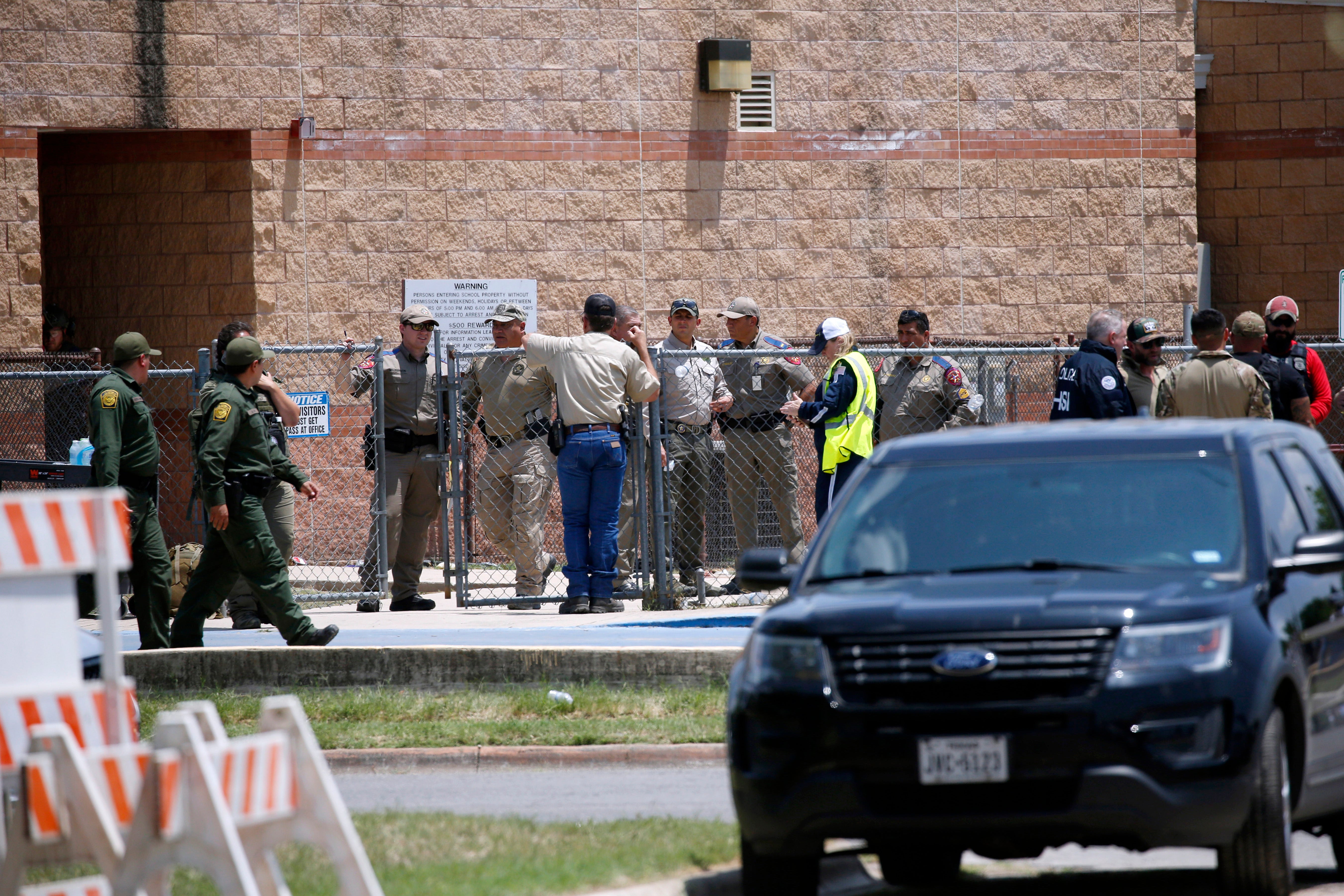Uvalde shooter’s uncle begged police to let him speak to killer to stop the rampage. He never got the chance
Former Uvalde school police chief is facing charges over botched response to mass shooting
Texas police got a deluge of 911 calls during the 2022 Uvalde school shooting — from trapped students and teachers, confused state officials and a family member of gunman Salvador Ramos — but nothing seemed to spur officers to action, according to a new trove of evidence in the case.
Even though nearly 400 officers from local, state, and federal law enforcement arrived on the scene, it took police more than 70 minutes to confront and fatally shoot Ramos, who by then had killed 19 students and two teachers in one of the worst school shootings in US history.
The calls, released to the public on Saturday after a lawsuit from the Associated Press and other news organizations, provide new insights into what police knew and when about the May 24 shooting.

One notable call came from Armando Ramos, Salvador Ramos’s uncle, who begged police to connect him with his family member in the hopes he could talk him into surrendering.
“Everything I tell him, he does listen to me,” Ramos said in the 911 call.
“Maybe he could stand down or do something to turn himself in.”
By then, however, the standoff was over, and police had received numerous other pleas urging them to act.
The calls came in before the shooting even started.
“Oh my God, they have a gun,” one caller said, describing how Ramos crashed a pickup into a ditch outside of the school.
“Oh my God, I think there was kids at PE area,” she added. “Please hurry!”

Ramos entered the school at 11:33 am, and the first officers on the scene arrived minutes later, but radio traffic released as part of the suit captures them mostly discussing setting up a perimeter, controlling traffic and keeping parents away from the scene of the incident.
Nearly 45 minutes later, an official from the state public safety department called local police, asking if a command post had been set up, to which an officer replied they were unsure.
Meanwhile, inside the school, the massacre continued.
“Please, I don’t want to die,” student Khloie Torres, 10, called police to say. “My teacher is dead. Oh, my God.”
“Hurry, hurry, hurry, hurry!” an instructor said in another 911 call, describing hearing “a lot, a whole lot of gunshots.”
Family members were furious it took two years for this additional information to surface.
“If we thought we could get anything we wanted, we’d ask for a time machine to go back ... and save our children, but we can’t, so all we are asking for is for justice, accountability and transparency, and they refuse to give this to us,” Brett Cross, whose nephew Uziyah Garcia was killed in the shooting, told the AP.
The 911 audio is the latest damning portrait of the police response to the shooting.
In January, a Justice Department report found that a series of “cascading failures of leadership, decision-making, tactics, policy and training” were shown throughout the operation.
The DOJ described a failure to establish a clear chain of command, and officers who ignored training principles about immediately engaging an active shooter until the threat is over.
“Had law enforcement followed generally accepted practices in an active-shooter situation and gone right after the shooter to stop him, lives would have been saved, and people would have survived,” Attorney General Merrick Garland said when the report was released.

Earlier this year, Pete Arredondo, the former school police chief of Uvalde, was charged with child endangerment over the failed response, alongside a fellow officer. The men, the only two facing charges over their role in the operation, have both pleaded not guilty.
During the shooting, Arredondo initially left his radio in the car.
He said he didn’t consider himself incident commander, and didn’t tell others to avoid breaching the classroom where Ramos hid. State officials argue it is Arrendondo who made the call to treat the gunman as a “barricaded suspect” and attempt a negotiation first.
As Ramos was inside a classroom shooting children, dozens of officers stood outside trying to figure out what to do and waiting for protective shields to arrive.
Ultimately, a Border Patrol unit, along with an officer from a sheriff’s department in an adjacent county, breached the classroom and shot Ramos, reportedly making the decision on their own rather than getting a directive from an incident commander.
Arredondo told CNN this week he’s been “scapegoated from the very beginning.”
“If you look at the bodycam footage, there was no hesitation — there was no hesitation in myself and the first handful of officers that went in there and went straight into the hot zone, as you may call it, and took fire,” Arredondo said, describing a brief initial encounter between Ramos and the first arriving officers on the scene.
“The guidebook tells you the incident commander does not stand in the hallway and get shot at,” he added. “The incident commander is someone who is not in the hot zone.”
Bookmark popover
Removed from bookmarks